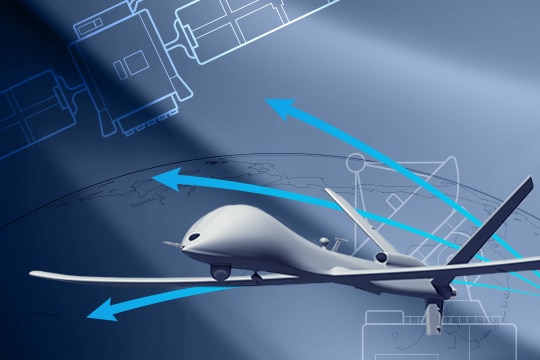
# Use Cases
Jamming and Spoofing Protection for UAVs Using GNSS Signals
Problem We Solve
Unmanned Aerial Vehicles (UAVs) need to have unhindered access to GPSGlobal Positioning System is a navigation satellite system. See also satellite signals, to ensure continued operation at all times. Losing the signals necessary for positioning and navigation, even momentarily, could become hazardous. Fully autonomous UAVs are even more dependent on flight aids, autopilot and GPS signals.
Because of the relatively weak signal power (-130 dBm), GPS signals can easily be disrupted by unintentional noise or intentional jamming transmitters.
In addition to that, the GPS satellite signals that are available to civilians do not have encryption or authentication controls, and as a result, these signals can easily be faked. If a bad actor knows what they are doing, they can leverage the inherent vulnerabilities of the GPS signals and launch quite sophisticated spoofing attacks against UAVs.
Aerospace engineers and UAVUnmanned Aerial Vehicle. Remotely piloted aircraft commonly referred to as a drone. See also manufacturers need ways to detect and protect against these satellite signal threats in order to ensure the continued operation of mission-critical equipment, such as autonomous taxis, agriculture, natural disaster response, search and rescue, critical infrastructure monitoring and more.
Why it is Important
The devices used to generate spoofing attacks against UAVs – primarily software defined radios, or SDRs – have become more ubiquitous due to their commercial availability and low cost. The increasing trend of using SDRs to spoof GPS signals demands the need for stronger, integrated anti-spoofing measures.
The implications of a UAV getting spoofed are potentially dangerous, as it can be guided off course causing it to crash or even be hijacked, depending on the type of spoofing attack and the degree to which that UAV relies on GPS for guidance, navigation, and control.
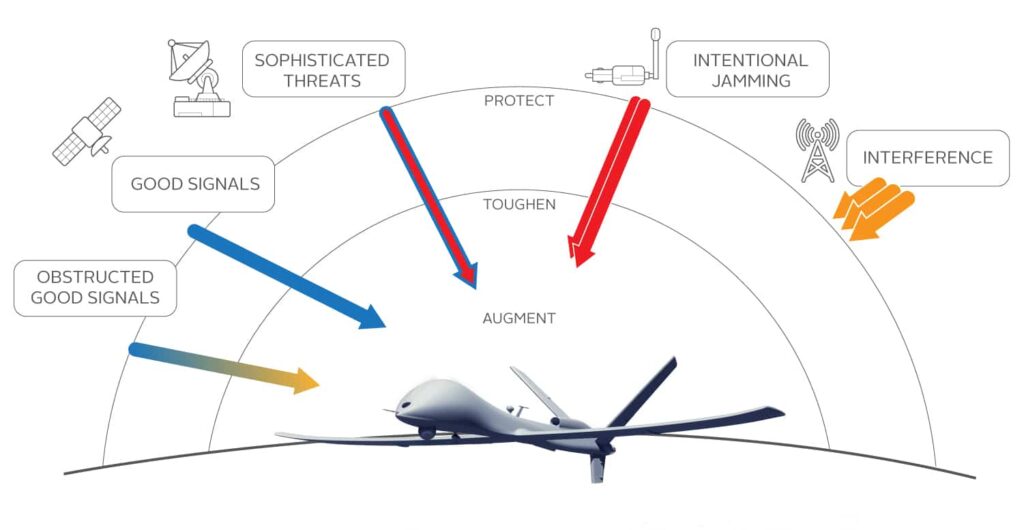
The more a UAV relies on GPS for positioning, navigation, and timing, the more vulnerable it is to spoofing signal manipulation. This is especially true for UAVs that operate autonomously for commercial deployments ranging from cargo transportation, taxi services, agriculture, disaster relief, risk assessment, and monitoring of critical infrastructures. Other aspects of a UAV system – not just the vehicle itself – could also be at risk, including the ground station or command and control center that is monitoring the UAVs flight, the payload or sensors aboard, or even the data link.
How We Solve it
Orolia provides three layers of security for UAVs to defend against jamming and spoofing threats. These three protection layers can range from anti-jamming add-on devices, to embedded software on-board the UAV that detects signal navigation threats, to resilient positioning, navigation and timing systems. Let’s take a closer look at each of the three solutions.
GPSdome Anti-Jammer
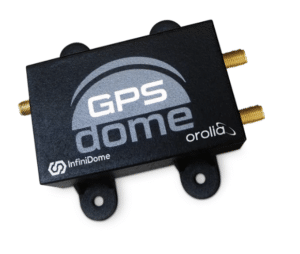
The first layer of defense against GNSSGlobal navigation satellite system (GNSS): A general term describing any satellite constellation that provides positioning, navigation, and timing (PNT) services on a global or regional basis. See also signal threats is to repel them away before they reach your UAV. The GPSdome Anti-Jammer is a great way to prevent jamming signals from affecting your UAV in the first place. The GPSdome connects to an existing antenna on a UAV and then it also comes with a second antenna to revert jamming signals back to a jammer. By embedding the GPSdome into a UAV’s system, it ensures continuity of autonomous navigation and operation during jamming conditions. Its small form factor is ideal for mobile and or UAV applications. With GPSdome’s protection, any mobile aerial vehicle immediately becomes more robust and protected against wireless attacks.
BroadShield
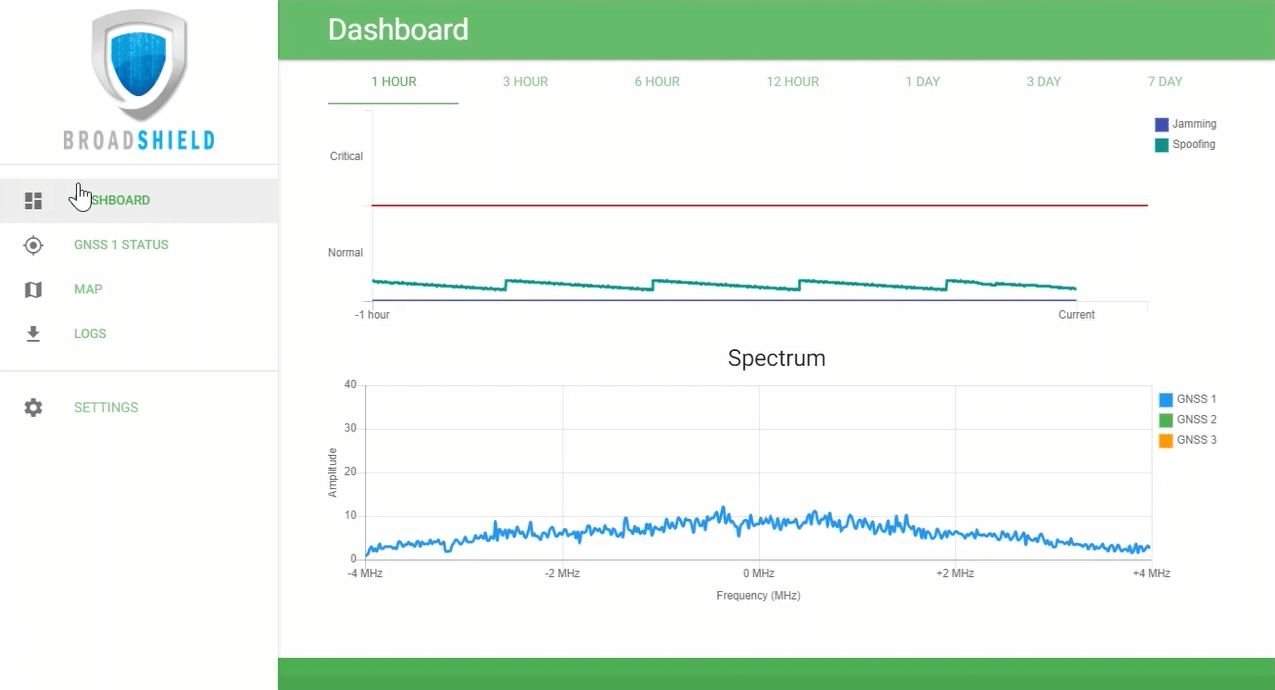
The second layer of defense against jamming and spoofing is the ability to detect loss of navigation in real time. Broadshield is software that can be embedded on a UAV to help identify when a spoofing attack is occurring. You can install BroadShield software to detect jamming and spoofing. BroadShield’s patented algorithms immediately report disruptions to the user interface and can also mitigate the interference and/or fake satellite signals.
VersaPNT
The third layer of defense is having a backup source of navigation and motion tracking, in case your UAV goes off course from a spoofing attack. If your UAV performs a critical task that requires a GPS backup, and you cannot afford the risk of a system failure due to intentional or unintentional GPS interruption, then the VersaPNT is an ideal solution. The three main benefits of the VersaPNT are:
Resilient – High performance internal time base and inertial sensor to manage potential GNSS signal loss.
Configurable – Configurable for multiple UAV and airframe platforms.
Rugged – MIL-STD-810G low size, weight and power to enable seamless integration into your UAV system.
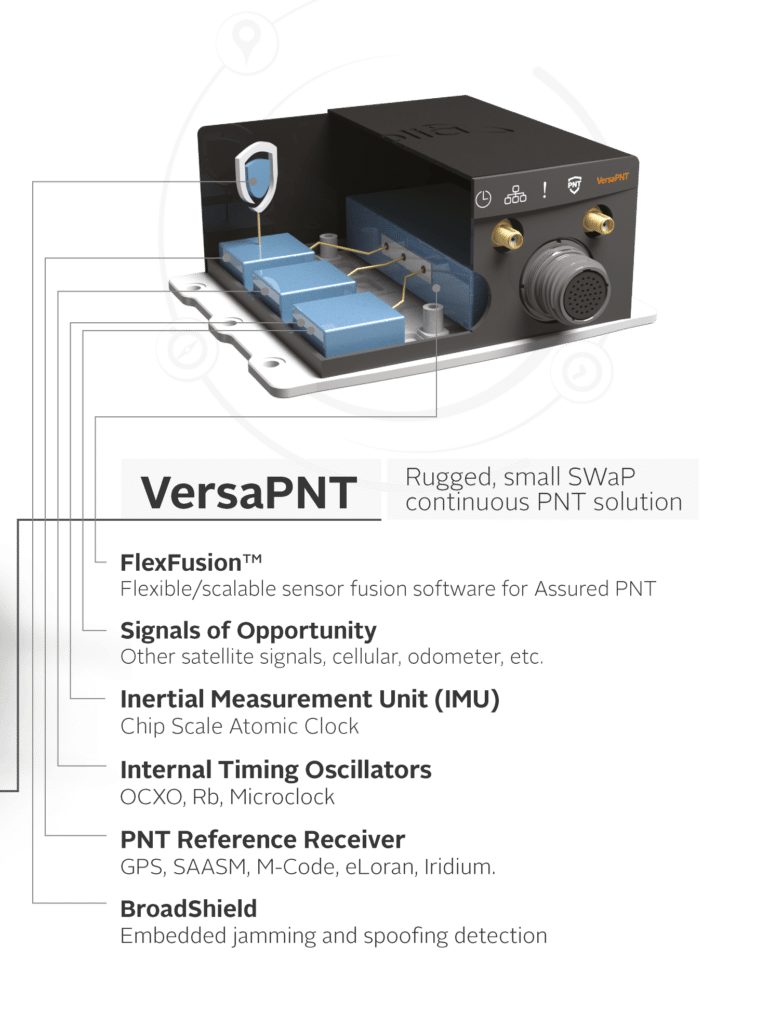
Why Choose Us
- Easy UAV Integration – All three layers of signal protection – the VersaPNT, the GPSdome anti-jammer, and Broadshield all can easily be embedded into a UAV because they were designed to support mobile applications. The VersaPNT can sit on board the UAV, and the spoofing detection software, Broadshield, is embedded into the VersaPNT as an extra protection, and the GPSdome can be attached to a UAV’s existing antenna with no need for non-recurring engineering.
- Resilient – By adding a secure, robust timing system that can be used for navigation and positioning in case GPS is temporarily lost, your UAV will be more resilient.
- Low SWAP – The anti-jam antennas and add-on devices are smaller than the palm of your hand and weigh less than 150 grams.
- Rugged – The anti jam antennas and add-ons are designed for harsh environments (IP67 rated).
- Field-Proven – Broadshield detection algorithms, plus the inertial sensors on board the VersaPNT have been rigorously tested for over 10 years.
Discuss Your Solution
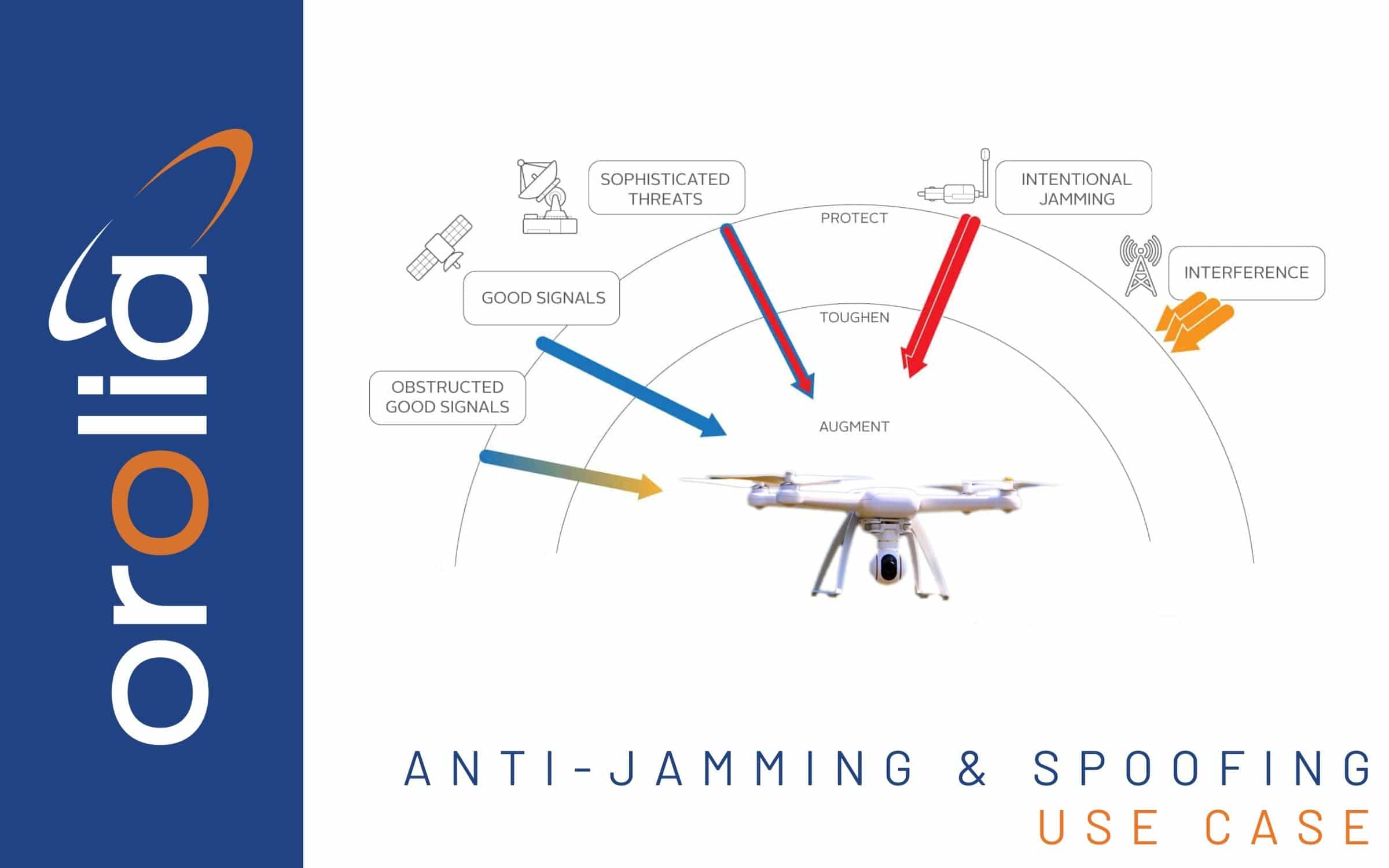
 Related Resources
Related Resources
Related Resources


